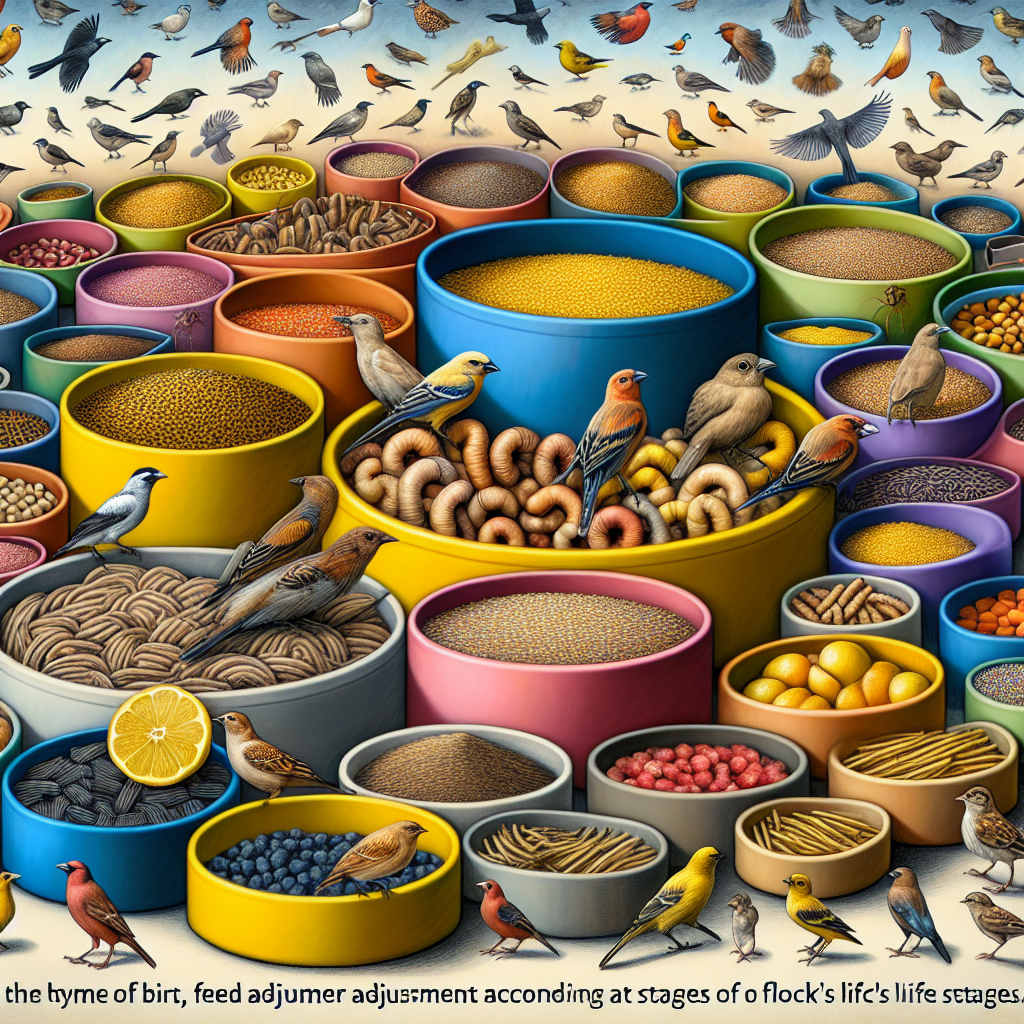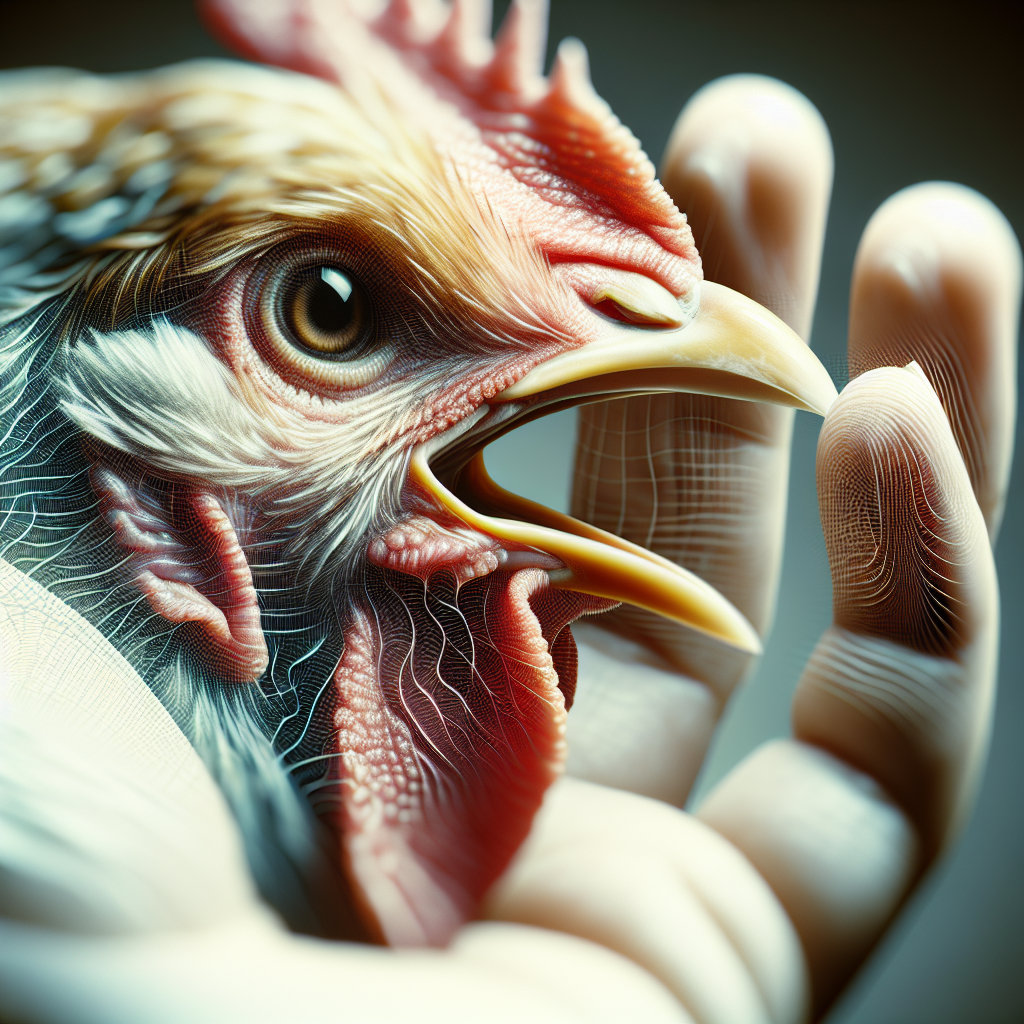If you’ve ever wondered how to adjust feed types when raising meat birds versus egg layers, we’ve got you covered! Whether you’re a seasoned poultry farmer or just starting out, understanding the differences in feed requirements for these two types of birds is crucial for their optimal growth and health. By tailoring their diets to suit their specific needs, you can ensure that your meat birds and egg layers thrive and provide you with delicious results. Let’s take a closer look at how you can make the right adjustments when it comes to feeding your feathered friends.
Meat Birds vs. Egg Layers
Raising poultry can be a rewarding experience, whether you are raising birds for meat or for eggs. However, it is important to note that meat birds and egg layers have different nutritional requirements. Understanding these differences and making the necessary adjustments in their feed can greatly contribute to their overall health and growth. In this article, we will discuss the various factors that differentiate meat birds from egg layers, including their nutritional requirements, feeding efficiency, growth rate, overall health, and feed conversion ratio.
Nutritional Requirements
Proper nutrition is essential for the development and well-being of any poultry. However, meat birds and egg layers have distinct nutritional requirements due to their different purposes. While both types of birds need protein, calcium, energy, vitamins, and minerals, the quantities and ratios of these nutrients vary significantly.
Protein Content
Meat birds require higher levels of protein in their feed compared to egg layers. This increased protein content aids in muscle development and growth, as these birds are bred to reach their market weight quickly. On the other hand, egg layers need slightly lower protein levels to support egg production without excessive muscle growth.
Calcium
Egg layers have a higher demand for calcium as it is necessary for the production of strong eggshells. Calcium-rich feed helps maintain their bone health and prevents issues like eggshell breakage. In contrast, meat birds require lower calcium levels since their growth is focused on muscle development rather than egg production.
Energy
Meat birds need feed with higher energy levels to sustain their rapid growth rate. The increased energy content in their feed ensures proper weight gain and muscle formation. Egg layers, on the other hand, require slightly lower energy levels as they prioritize egg production over rapid growth.
Vitamins and Minerals
Both meat birds and egg layers require a balanced supply of vitamins and minerals to maintain overall health and productivity. However, specific nutrient requirements may vary slightly between the two. It is essential to provide well-formulated feed containing the necessary vitamins and minerals to meet the specific needs of each type of bird.
Feed Type Adjustments
To cater to the distinct nutritional requirements of meat birds and egg layers, it is crucial to adjust their feed types accordingly. It is generally recommended to provide different feed formulas during different stages of growth to optimize their health and performance. The primary feed types for both meat birds and egg layers include starter feed, grower feed, finisher feed, and layer feed.
Starter Feed
Starter feed is essential for young chicks as it provides the necessary nutrients for their early growth and development. For meat birds, starter feed should contain a higher protein content to promote rapid muscle growth. It should also have lower calcium levels since the focus is not on egg production. Additionally, starter feed for meat birds may include additives to further enhance growth and development.
Grower Feed
Once the chicks have transitioned from the starter stage, they require grower feed. Grower feed for meat birds should contain a moderate protein content to support ongoing muscle development. While the energy levels can be slightly lower than in starter feed, it should still provide sufficient energy for continued growth in meat birds.
Finisher Feed
As the birds approach their market weight, they should be transitioned to finisher feed. Finisher feed for meat birds typically has a slightly lower protein content compared to grower feed. However, the energy levels should be higher to support the final stages of growth. Additionally, supplements that promote muscle development may be added to the finisher feed to ensure optimum meat quality.
Layer Feed
For egg layers, once they reach maturity and start laying eggs, they should be transitioned to layer feed. Layer feed has a lower protein content compared to feeds meant for meat birds. However, it contains higher levels of calcium to support the production of strong eggshells. Layer feed may also have added nutrients, such as omega-3 fatty acids or omega-6 fatty acids, to enhance the quality of the eggs.
Transitioning from Starter to Grower Feed
Transitioning from starter feed to grower feed is an important step in the growth process of both meat birds and egg layers. This transition should be timed correctly and done gradually to minimize any stress or digestive issues that may arise.
Timing
Typically, the transition from starter to grower feed occurs around the 3 to 4-week mark, depending on the breed and the individual bird’s development. It is crucial to monitor the birds’ growth and behavior to determine the appropriate timing for the switch.
Mixing the Feeds
To ensure a smooth transition, it is recommended to mix the starter feed and grower feed together for a few days. This allows the birds to adjust gradually to the new feed and prevents sudden changes in their diet. Gradually increasing the proportion of grower feed in the mix over a period of 5 to 7 days will help the birds adapt comfortably.
Gradual Transition
During the transition period, it is important to closely observe the birds for any signs of digestive upset or aversion to the new feed. If any issues arise, it may be necessary to slow down the transition process or consult with a poultry expert for guidance. Gradually transitioning the birds from starter to grower feed ensures a seamless adjustment and promotes their overall health and growth.
Transitioning from Grower to Finisher Feed
Similar to the transition from starter to grower feed, transitioning from grower feed to finisher feed must be done carefully to ensure the well-being of the birds.
Age Considerations
The timing of this transition varies based on the breed and the targeted market weight. Generally, the switch to finisher feed occurs when the birds are around 5 to 7 weeks old. However, it is essential to evaluate the birds’ development and weight gain to determine the optimal timing for the transition.
Adjusting Feeding Amounts
When transitioning to finisher feed, it is also important to adjust the feeding amounts to ensure the birds receive the right balance of nutrients. As they near their market weight, their feed consumption may decrease, but the energy intake should still be sufficient for the final stages of growth.
Gradual Transition
To allow for a smooth transition, it is recommended to mix the grower feed and finisher feed for several days. This gradual process helps the birds gradually adapt to the new feed and prevents any potential digestive disturbances. Over the course of a week, gradually increase the proportion of finisher feed in the mixture until it becomes the sole feed.
Conclusion
Proper feed adjustments play a crucial role in raising healthy and productive meat birds and egg layers. Understanding the nutritional requirements of each type of bird and making the necessary feed-type adjustments throughout their growth stages is key to their overall health and optimum performance.
Consulting with poultry experts or professionals in the field can provide valuable guidance and ensure that you are meeting the specific needs of your birds. Additionally, closely monitoring the health and behavior of the birds is essential in identifying any potential issues and addressing them promptly.
By optimizing the feed types and ratios, you can provide your meat birds and egg layers with the right nutrients at the right stages of their development. This will not only support their growth and productivity but also contribute to their overall well-being and longevity. Remember, a well-fed bird is a happy bird!




